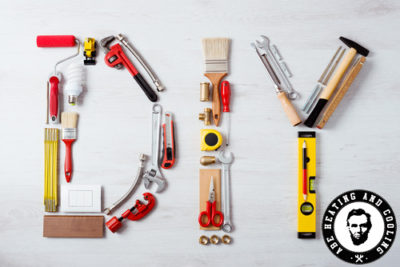“Abe's Heating and cooling were professional and on time. they helped me with two time sensitive projects and did excellent work. I know who I'll be calling if I should ever need an HVAC technician.”
Blog
 Saving money on energy costs starts with assessing your energy usage and needs, as well as determining where energy is being wasted. A professional home energy audit is the most accurate way to determine where the opportunities for cost savings are. However, a simple but thorough walk-through on your own can identify many problem areas in your home and allow you to address them.
Saving money on energy costs starts with assessing your energy usage and needs, as well as determining where energy is being wasted. A professional home energy audit is the most accurate way to determine where the opportunities for cost savings are. However, a simple but thorough walk-through on your own can identify many problem areas in your home and allow you to address them.
Drafts are among the biggest energy wasters. Inside your home, feel around windows, doors, baseboards and where the walls meet the ceiling. Also check around lighting and plumbing fixtures, electrical outlets and switches to identify any air leaks. On the outside check for areas where different building materials meet and any outside faucets, light fixtures and outlets. Check for cracks and holes in the foundation or siding.
Seal the air leaks with caulk and weatherstripping, as appropriate. Make sure that there is adequate and proper ventilation for your HVAC system and any other combustion appliances (those that burn gas or oil) to prevent dangerous fumes and carbon monoxide from being drawn back into your home by an exhaust fan.
Heat loss through the ceiling and walls in your home is another major area of energy waste. Even if the insulation was sufficient at the time your home was built, it may be insufficient by today’s standards, and in light of current and future energy costs. Adding insulation will make your heating system more effective, increase your comfort level and save money. Check the attic and walls, and the basement/crawlspace ceiling. Keep attic vents clear of insulation. Water vapor can pass through the ceiling and greatly diminish the effectiveness of the insulation, so make sure there is a vapor barrier under the attic insulation,.
Check and replace the air filters regularly (typically once a month) and schedule professional service of your equipment once a year to improve and maintain efficiency and prolong the life of your system.
Consider replacing a system that is more than 15 years old with a newer energy-efficient unit.
Check your ductwork and repair any leaks or holes.
Replace older inefficient light bulbs, particularly in rooms where lights are on for two hours or more, with energy saving incandescents, compact fluorescent lamps (CFLs), or light-emitting diodes (LEDs). These newer bulbs are more expensive to purchase, but they last a long time and save significantly on energy costs. Dimmers, sensors and timers can make your lighting even more efficient.
Estimate the energy use of your current appliances and identify the biggest energy hogs. Save energy by unplugging items when they are not in use. Electronics that have a clock/timer or remote, and some device chargers use energy even when they are not “On.” When replacing appliances and electronics, look for items with the ENERGY STAR rating to easily identify the most energy efficient options.
After identifying your energy costs, evaluating your needs and determining the sources of the greatest losses, prioritize your needs and budget. Use the list to figure out which areas have the most opportunity for savings.